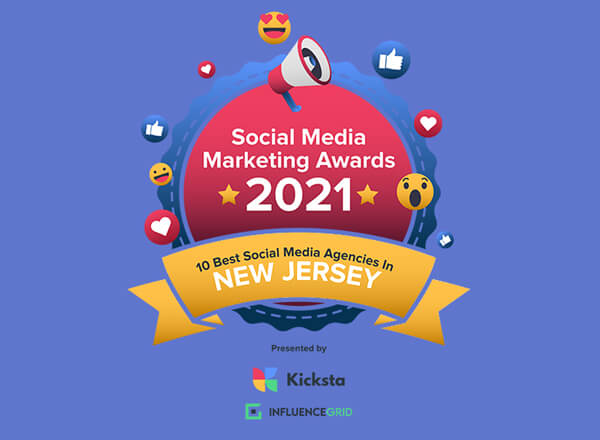
TOP-RATED DIGITAL MARKETING FIRM IN Philadelphia
(with no contracts, no commitments)
Scroll down

 Back
Back
Brand Strategy & Positioning
Combining forward-looking market segmentation with behavioural analytics along with a better understanding of customers is the future of brands. Rising above the clutter without breaking the bank is how intelligent brands are built in today's challenging economic conditions.
Web & Mobile Design and Development
Companies that create exceptional user journeys and experiences set themselves apart from their competitors. From eCommerce to complex membership and marketplace platforms to mobile apps, these tools are essential for a successful business strategy, implementation and consistent growth.
Content Creation & Video Production
Evolved real-time marketing and a global content strategy revolve around consumer and data-driven experiences designed to serve the end customer. The magic happens when brands unify creativity and analytics with their content and video marketing to provide exceptional experiences to their customers.
Paid Search & Social Marketing
Creating great omnichannel consumer experiences while driving business KPIs and revenue growth are key elements to successful ad campaigns. Highlight your brand's competitive advantage and generate bottom-line value by leveraging unique strategies and creating relevant & entertaining content.
In the Press













 Differentiate Your Company Brand
Differentiate Your Company Brand
 Boost Conversion Rates
Boost Conversion Rates
 Engage & Retain Attention
Engage & Retain Attention
 No Limits To Your Vision & Creativity
No Limits To Your Vision & Creativity

brand architects

Digital Engineers

content developers


Read more


Read more


Read more


Read more


Read more


Read more


Read more


Read more


Read more


Read more


Read more


Read more











The City of Brotherly Love. The home of charming neighborhoods with a distinctive personality, vibrant markets, and more street art than you could ever imagine. The first planned city and a city of firsts: the first public library and daily newspaper and the first hospital, volunteer fire department, and zoo. A place steeped in history but on the rise to keep progress moving up. We love this unique city and are always eager to support progress through digital innovation.
See all projects

Brands We Work With

















 Clutch Names Socialfix Media as a Leading 2021 Global Provider of Content Marketing
Awards & Press
Clutch Names Socialfix Media as a Leading 2021 Global Provider of Content Marketing
Awards & Press
 Socialfix Forms a New & Exciting Partnership with Soleares Research
Awards & Press
Socialfix Forms a New & Exciting Partnership with Soleares Research
Awards & Press
 Socialfix Media Gets Featured in Clutch’s Top 1000 List of Global B2B Leaders
Awards & Press
Socialfix Media Gets Featured in Clutch’s Top 1000 List of Global B2B Leaders
Awards & Press
 Socialfix Media Leads New York’s Content Marketing Space on Clutch Leaders Awards
Awards & Press
Socialfix Media Leads New York’s Content Marketing Space on Clutch Leaders Awards
Awards & Press
 Socialfix Named Top Social Media Agency in the USA
Awards & Press
Socialfix Named Top Social Media Agency in the USA
Awards & Press
 Socialfix Media – Top-Rated B2B Marketing Agency in 2020
Awards & Press
Socialfix Media – Top-Rated B2B Marketing Agency in 2020
Awards & Press
 Socialfix Media Named Inc. 5000 Fastest-Growing Private Companies in America in 2020
Awards & Press
Socialfix Media Named Inc. 5000 Fastest-Growing Private Companies in America in 2020
Awards & Press























Not only is WordPress optimized for the search engines but there is plenty that you can do to improve your rankings. A good strategy involves choosing a reliable hosting provider, picking a SEO-friendly theme, and using plugins like Google XML Sitemaps, SEMrush SEO Writing Assistant, and Rank Math, among others.

A SEO agency can help you build a solid online presence through reputation management, local search optimization, brand development, performance monitoring, and a lot more. SEO services intend to increase organic traffic and visibility, boost SERP results, bring in more customers to your website, and achieve lasting results.

Yes, SEO services are totally worth the cost if you use a reputable agency. While you can try doing SEO yourself, oftentimes it gets too technical and a single mistake can cost you dearly when it comes to search engine traffic, visibility, and your business reputation. If you choose to work with a SEO agency, you can expect consistent results. Make sure you look at their portfolio, testimonials, reviews, and pricing, however, and ask whether they can develop a custom strategy for your business.

Sonic SEO is a digital marketing agency specializing in social media marketing, search engine optimization, and web design. A full-service agency founded in 1998, Sonic helps marketers establish and grow their presence across platforms, including LinkedIn, Google, Twitter, and Facebook. They also specialize in app design, content writing, and internet marketing.

SEO will still be relevant in 5 years as long as you adapt your strategy. There are some trends to follow, like search engines and social media merging to some extent. Twitter already joined a partnership with Google so that its algorithm can access and obtain information from Twitter via a data feed. While the search engine will not index every single tweet, a lot more tweets are likely to be indexed and much faster. What this means for marketers is that having their content tweeted could help drive organic traffic.

To begin with, SEO metrics that you should focus on include page speed, referring domains, new backlinks, domain authority, keyword rankings, CTR, and organic traffic. Good SEO tools to track results are Ahrefs, SEMRush, KWFinder, MOZ Pro, and SpyFu.

In 2022 Google’s AI-powered algorithm RankBrain is expected to become one of the major ranking factors, allowing the system to better understand and sort search query and user intent. Google will also factor in the words of the query, personalization, and the location of the user. What this means for SEO is that high-quality, relevant content will be ranking higher in SERPs while pages that don’t provide helpful information would lose rankings. The algorithm will keep websites that lack content or fail to provide good user experience out of the SERPs.

Bots favor and regularly crawl well-designed websites while visitors find it easier to navigate websites with good architecture. They are more likely to stick round, explore, and share content. Speaking of content, it is best to produce articles around a specific topic. This is because Google directs users to the most relevant and authoritative search results. As you are an expert in your field, you want to make sure your content reflects that.
As part of your strategy, you also need to pick relevant keywords, create engaging headlines and page titles, and optimize your videos and images.

A good SEO strategy for your law firm is to focus on long-tail and low competition, high volume keywords. You can also use keywords with commercial intent and low levels of competition. They rank more easily and have better conversion rates and rank as customers are actually looking for legal services. Obviously, you also need to incorporate them into content. Content should be longer but in-depth, informative, and easy to digest. You should also add videos, images, and graphics and link back to authoritative sources.

There are plenty of things that you can do to optimize your website for mobile. Your strategy should focus on things like improving your website’s load time, optimizing for local search, and creating a mobile URL. You also need to format your content and make it easy to scroll to improve the user experience. Adding an easy-to-use navigation toolbar will make it easier for mobile users to search for and access information. The best way to do this is by adding a hamburger menu.

Again, you need to find the right keywords for your business so that customers can find your products online. If you are a coffee shop, for example, your keywords could be “coffee near me” or “espresso”. Not all keywords would be relevant though, like “how to make homemade coffee syrup”.
Other SEO strategies that will benefit your small business are asking customers for reviews, responding to comments, queries, and reviews, and optimizing your Google My Business profile by adding your location, hours, and high-quality images.

The main focus of your SEO strategy should be on keyword research and website architecture. When searching for relevant keywords for your eCommerce website, look for phrases with a buying intent like “best tablet under $500” or “buy discounted sportswear online”. As your main goal is selling, you should focus on buying intent as opposed to informational queries. Then you need to also build your website architecture based on your keywords. Make sure it is scalable and easy to navigate to enhance the user experience. Poor navigation may also affect your Google rankings.

An SEO content strategy involves a number of steps, from identifying your target audience, topics, and keywords to tracking success. To identify your target audience, you may want to look at your current clients and ideal customer. Go through demographic data, web engagement, and purchase behavior indicators to come up with your buyer persona for whom you should be producing content. Next you need to come up with topics related to your industry or area of expertise as well as relevant keywords. You can also share content on social media for a wider reach. Finally, it is important to track success by looking at indicators such as organic CTR, keyword rankings, page speed, number of backlinks, and organic visibility.

The top three SEO strategies are content posting, website optimization, and link building. Posting content on a regular basis means fresh indexing by Google’s algorithm. The more frequently you post new content, the quicker you will get indexed and the better your chances to achieve high rankings.
Website optimization involves posting long-form in-depth content for your webpages and using relevant keywords. You want to link all posts to the main page to create some sort of a web.
Link building is a strategy of gaining relevant hyperlinks from other websites to improve search visibility. Here added benefits are more website traffic, higher Google rankings, and website credibility.

Producing fresh, engaging content, focusing on the user experience, and testing performance in search are SEO techniques that bring effective results.
With over 5 million blog posts published daily on WordPress and 57 percent of bloggers publishing on a daily basis, it’s easy to fall behind. (Tech Jury) Producing quality content and doing so regularly should be a top priority if you want to improve your rankings. You may want to use Google’s Search Quality Evaluator Guidelines to find whether you meet the quality criteria. Informational content, for example, should be professionally presented, unique, comprehensive, and accurate.
Second, you want to focus on improving the user experience as Google takes into account factors such as click-through rate, dwell time, and bounce rate. Third, you need to test your website’s performance and ranking in search results to see where you stand.

The key to creating a successful SEO strategy is getting to know the B2B decision-maker and not just demographics and firmographics such as size, location, and industry but their goals and pain points. The focus should be on decision-makers as human beings. Then you can move on and focus on keywords. As a rule, there are fewer searches for B2B keywords as there are fewer senior executives than moms, pet owners, or home buyers. What this means is that you will be mostly targeting keywords with a low cost per click (CPC) and 50 – 100 monthly searches. That’s not bad news, however. Using multiple keywords will still get you a good amount of traffic.

SEO involves a number of strategies aimed at increasing organic traffic. SEM or search engine marketing, on the other hand, mainly refers to paid ads whereby marketers bid on keywords. Advertisements can take different forms, including virtual-based such as shopping ads and product listings and text-based, including dynamic, standard, and expanded text. There are also two visual types: image and native.

This may come as a surprise, but you can practice SEO without a website. You can use local listings, job websites, and social media to accomplish your goals. For example, you can use SEO to optimize your social media page so that you get found easily by users. Enter your business details, use relevant keywords, and fill out the “About” and bio sections.
If you are a small business, then you want to improve your local ranking by optimizing your Google My Business. Not only is it highly visible and completely free but users will get all the information at a glance, like your phone, email, business hours, and location.

SEO can aid your sales efforts in many ways. To begin with, informative, engaging content creates positive experiences and value that you can offer to customers. It is also a resource that you can share on social media to reach wider audiences. When you create high-quality, autoritative, and relevant content, the chances are users will find and engage with your business before all others. High-quality content can take diverse formats like product reviews, lists, how-to guides, e-books, guest posts, podcasts, video, and so on.
Second, with more people going mobile and searching for local businesses, focusing on local content, including news, events, and attractions, can help you get more traffic.

When users enter a search entry, the pages that are displayed are Search Engine Results Pages (SERP). SERPs include a mixture of both pay-per-click and organic results. While PPC ads are paid for by advertisers, organic search results are calculated by the platform’s algorithm and can be influenced by SEO.
Note that you cannot pay Google to rank higher. What you should do is create relevant content. As Google generates revenue by displaying ads on web pages, the better search results users are delivered, the more likely they are to use the engine for future queries. The more people use Google, the more revenue it generates.
See More













Find out which SEO tactics work are best for your brand or small business

Many business owners have come to realize the importance of search engine optimization (SEO) for enhancing online visibility and reaching the right audience. By using tactics such as on page and off page SEO, keyword search, and digital PR small businesses are able to reach target audiences and make them aware of their business.
- On Page Technical SEO
On page SEO refers to website optimization for both users and the search engines. Common practices include optimizing URLs, internal links, content, title tags and meta descriptions, images, and site load times. The goal is to rank higher in search results and boost organic traffic.
- Off Page SEO
Off site or off page SEO covers all tactics and strategies that help increase domain authority and a website’s position in the search results. Off page SEO is about getting links from other websites through guest posting and blogging, social media marketing, local listings, forum posting, etc.
- Digital PR
Digital PR is a type of a promotional strategy to build your online presence and stay in front of the right audience. Some of the common tactics that marketers use are publishing press releases and articles, collaborating with influencers and other brands, participating in industry and community events, and newsjacking.
- Keyword Research
Keyword research is the process of identifying how often certain words and phrases are searched. The goal is to better understand users, their goals, intent, and demographics, and the themes that resonate with them.
- Long-Tail Keywords
These keywords are more specific or longer and typically get a small number of searches. At the same time, they have lower competition which makes them easier to rank. In fact, statistics by Search Engine Land shows that long-tail keywords account for 70 percent of all web searchers.
- Blogger Outreach
Blogger outreach is a strategy of collaborating with publishers to gain exposure and reach a wider audience. Here, common strategies to consider are actions like speaking at a conference, co-hosting a webinar, getting booked as a guest on a podcast, and requesting to guest post or share content on other publishers’ social media channels.
- Mobile Optimization
As people spend more time on their tablets and smartphones today, it is important to ensure that a website will reformat itself for mobile devices. Optimization typically focuses on page load speed and site structure and design to improve the mobile experience and keep users satisfied.
- Local SEO
Local search engine optimization aims to increase online visibility and traffic from local search. This can be done by optimizing for Google My Business, getting reviews from satisfied customers, using local keywords, and sharing content around local events, activities, and news stories.
- Google Business Listing
A local SEO tactic, having a Google business listing enables marketers to share important details such as their web address, opening/closing times, mobile phone, and location. Google My Business allows companies to appear in local pack listings and maps to improve search visibility. It is free and highly visible, takes little time to optimize, and gives marketers targeted exposure.
- Customer Reviews
Customer reviews help businesses in many ways, like building credibility, influencing purchase decisions, and finding which product works best and offers more value to customers. Reviews also allow businesses to better understand customers and their pain points and resolve any issues they face.
Positive feedback and reviews increase confidence in prospective customers and help marketers gain new business. A survey by Bright Local shows that customers read 10 reviews on average to determine whether a business is trustworthy. The survey also reveals that 79 percent of respondents trust reviews as much as feedback and suggestions from friends and family. Reviews with a positive sentiment are a form of free marketing that builds trust and loyalty and motivates purchasing decisions.























